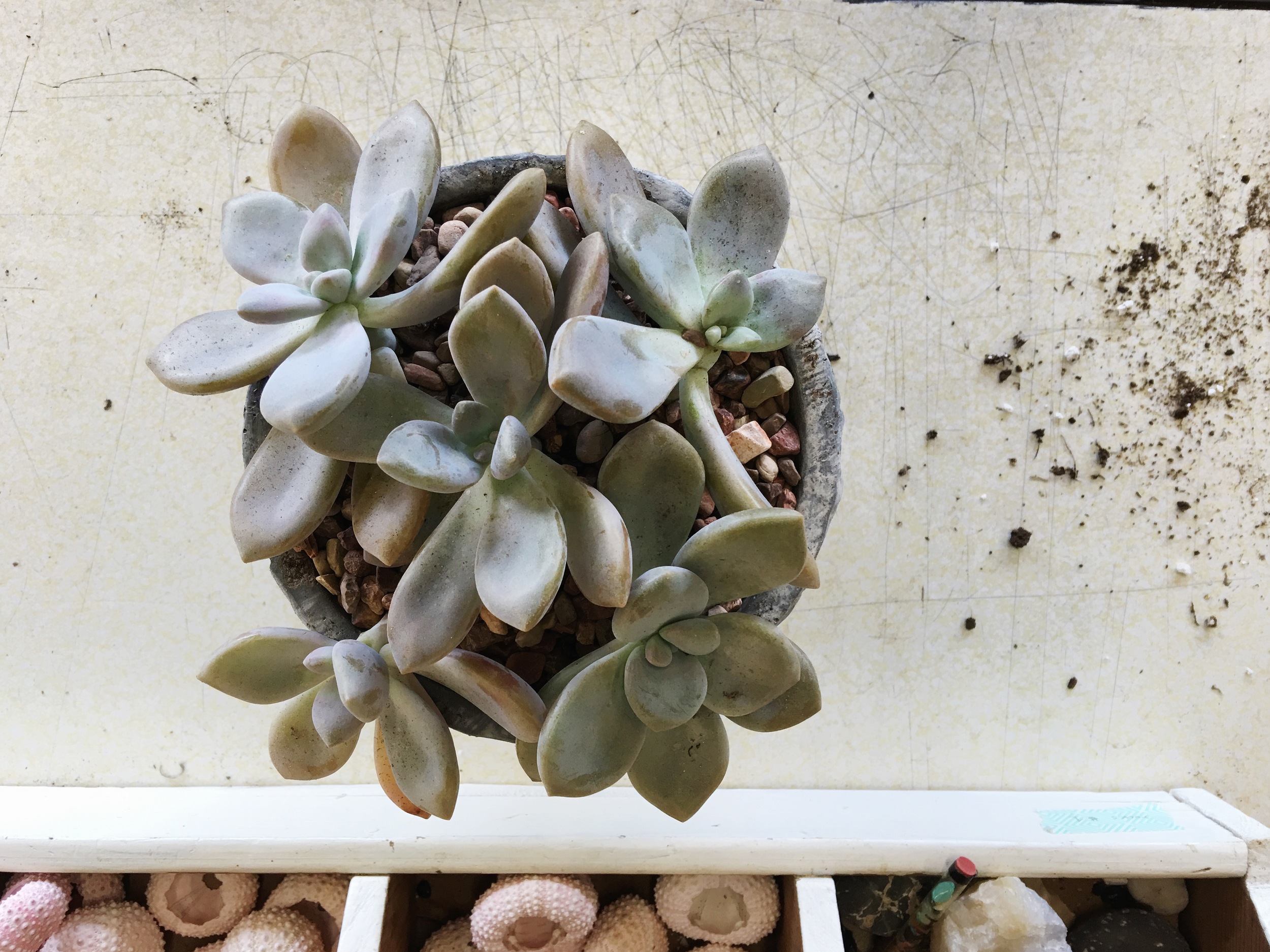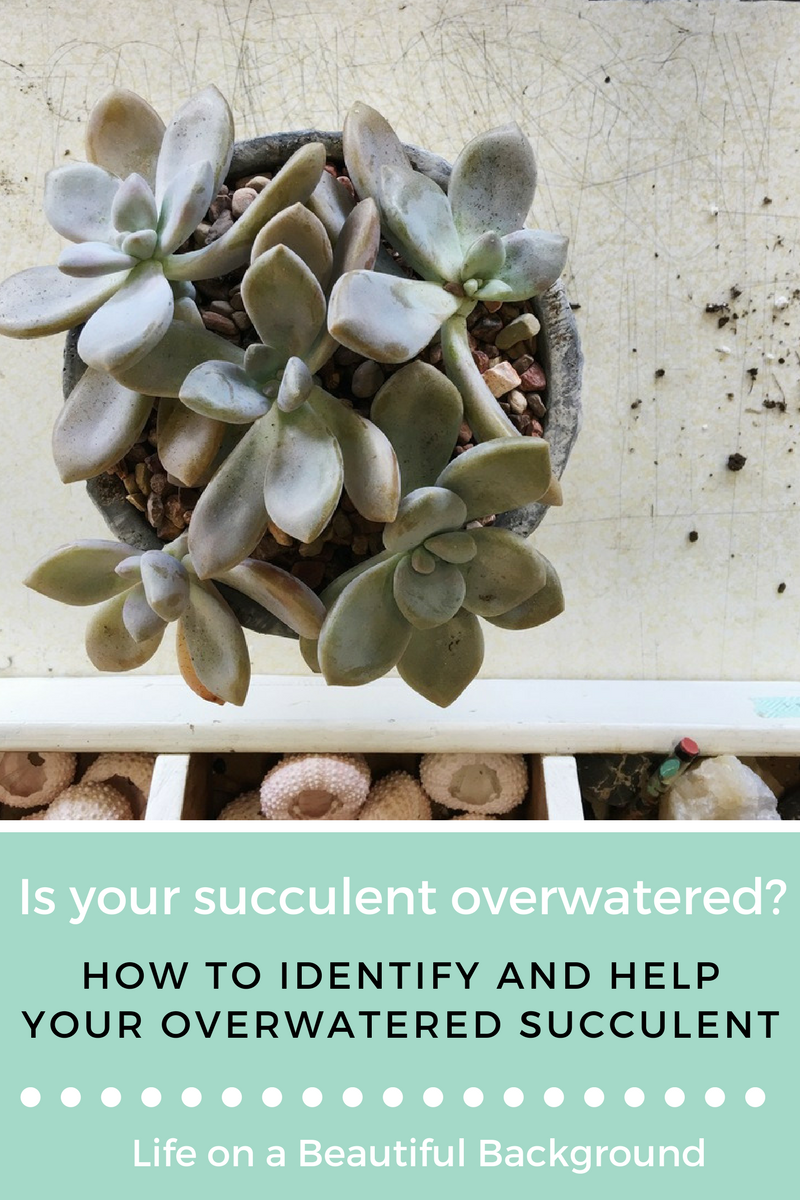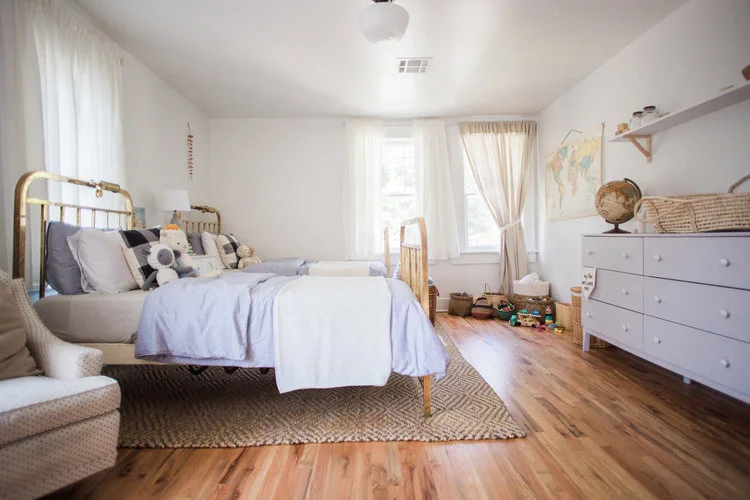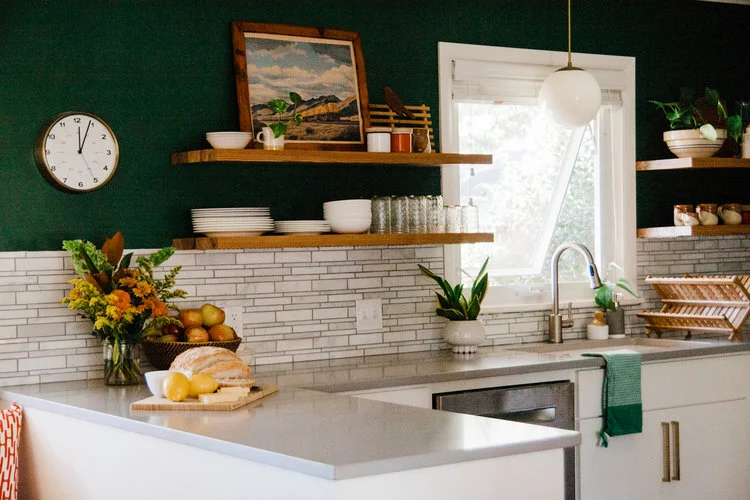Succulent Case Study: Overwatering
/One hot summer afternoon, a worried customer brought in a succulent (pictured below) with hopes of a diagnosis and treatment plan. We Ashleys were happy to oblige and showed her to the Plant Bar.
The Symptoms: Some leaves appeared rubbery, yellowish brown, and were starting to fall off. Note that it's normal for a succulent's lower leaves to shrivel and fall off as it grows; however, this rubbery look was not consistent with normal leaf shedding.
The Clues: The succulent was planted in a container with no drainage or pea gravel. When we removed the plant from its container, the soil was damp.
The Diagnosis: Overwatering, confirmed by Succulent Sara. Dare we remind you that overwatering is the fastest way to kill a succulent. They hate to sit in water so much that they usually die when it happens. Yikes!
The Treatment: To give this succulent the best chance at a healthy life, we removed as much of the damp soil as we could and replanted it atop a deep layer of pea gravel to help keep excess water away from the root system (learn the proper way to plant a succulent here!).
Also, we recommended to only water the succulent a quarter cup every other week and reminded our customer to err on the side of underwatering instead of overwatering. Succulents bounce back quickly from underwatering, but can't always come back from overwatering.
We are happy our customer came in when she did to get advice. Owning succulents or any plant for that matter is a learning process (which is part of the fun, right?). When things go awry, it's an opportunity to learn something new. At least that's what Succulent Sara tells us when we call her in a panic. We choose to believe her; she's a smart lady.

















